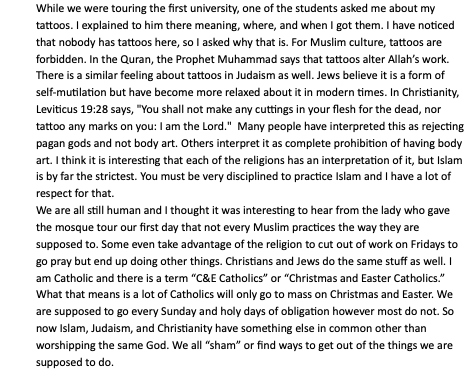Culture in Cuisine
Although not in beautiful Morocco with you all, I can sense the importance of culture there from pictures alone. Something that really caught my eye was the food dishes that radiate cultural tradition. The meal I am going to talk about today is named “Djaj Hummar”, a traditional Moroccan Dish composed of roasted chicken, various spices, and olives.
Djah Hummar is cooked using a Tagine, a traditional North African cooking vessel with two pieces that fit together to make a shallow bowl and a tall, conical lid. This cultural pot serves as a slow cooker that can be used in an oven or a stovetop, specifically used for slow-cooked meats. Most Tagine dishes usually have three components: meat, vegetables, and a variety of spices (Rytting, 2022).
The cultural significance of the Tagine to traditional Moroccan cuisine is what it symbolizes, hospitality and togetherness.Additioally, it is said that preparation using a Tagine pan allows for more of the aromatics to be tasted in the dish, where spices such as cumin, black pepper, and tumeric are integral ingridients in Morrocan flavors, which have Arab, Mediterranean, and Andalusi influences.
Hospitality and gathering have a huge emphasis in Morocan culture. Welcoming guests into homes and gracing them with an abundance of food is a traditional practice. Moroccan hospitality is charcaterized as “l'hospitalité marocain”, meaning an open embrace without reservation. This emphasis is also found in Morrocan dining restaurants, where the dining experience is unique. It is common to see low round tables with floor cushions and an array of traditional cuisine.
Overall, Moroccan cuisine looks to have such a strong cultural background that can be seen in its beauty. Thank you all for sharing the experience through photos. I hope you all are having the best time and eating tasty food! Bye:)




Comments
Post a Comment